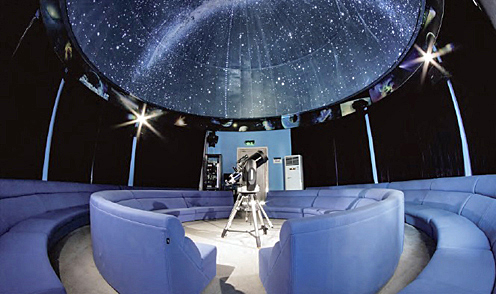Welcoming the WorldWide Telescope to the Open Source .NET Universe
At the .NET Foundation we strive to put code into the hands of those who use it, in an effort to create an innovative and exciting community. Today we’re excited to announce that we are doing just that in welcoming the WorldWide Telescope to the exciting universe of open source .NET.
I did my undergraduate degree in physics at a time when the Hubble Space Telescope (HST) was a new thing. I remember very well my amazement when I could load up one of about 100 CD-ROM’s from the Digitized Sky Survey to get access to observations from the Palomar Observatory and then later the HST, and compare them with my own results to track changes in the night sky. CD-ROM’s were a new thing back then too, but I wrote some VB code to capture data out of the JPEG images in the Sky Survey and compare it with my own images from the CCD in the back of the telescope on the roof of the University of Durham Physics department.
 Fast forward to 2008 and Microsoft Research moved Robert Scoble to tears and wowed the auidence at TED when it released the WorldWide Telescope, giving the public access to exactly the same type of raw astronomical data through an easy-to-use interface. The WorldWide Telescope application is great because it puts an incredible visualization engine together with some of the most interesting scientific data in the world into the hands of anyone. You can just explore the pretty pictures and zoom in as if you are seeing the universe on some of the best telescopes in the world – but you can also do real science with the same interface. Astronomers and educators using WorldWide Telescope have come to appreciate and beauty and power of tooling that enables such rich data exploration – truly setting that data free.
Fast forward to 2008 and Microsoft Research moved Robert Scoble to tears and wowed the auidence at TED when it released the WorldWide Telescope, giving the public access to exactly the same type of raw astronomical data through an easy-to-use interface. The WorldWide Telescope application is great because it puts an incredible visualization engine together with some of the most interesting scientific data in the world into the hands of anyone. You can just explore the pretty pictures and zoom in as if you are seeing the universe on some of the best telescopes in the world – but you can also do real science with the same interface. Astronomers and educators using WorldWide Telescope have come to appreciate and beauty and power of tooling that enables such rich data exploration – truly setting that data free.
Today, I am thrilled to announce that the .NET Foundation is working together with Microsoft Research and the WorldWide Telescope project team to set the application itself free. The code, written in .NET, is now available as an open source application under the MIT License on GitHub. We are very keen to help the team develop in the open and now that WorldWide Telescope is open source, any individual or organization will be able to adapt and extend the functionality of the application and services to meet their research or educational needs. Not only can they contribute those changes back to the wider community through a pull request, but they’ll allow others to build on their research and development. Extensions to the software will continuously enhance astronomical research, formal and informal learning, and public outreach, while also leveraging the power of the .NET ecosystem.
The WorldWide Telescope represents a new community coming to the Foundation. It’s also great that we now have representation within the foundation from a project that is a complex system that building on-top of the .NET Framework with both a desktop client, as well as extensive server based infrastructure. The WorldWide Telescope is an important tool and I’m glad the .NET Foundation can be of help as it begins its journey as an open source application with committers from inside and outside of Microsoft. We’re thrilled to welcome the community of astronomers using and contributing to the WorldWide Telescope into the exciting universe of open source .NET.
You can read more about the WorldWide Telescope on the website and more about the move to open source on the Microsoft Research Connections blog. The WorldWide Telescope team also have a very cool video on YouTube showing the power of the WorldWide Telescope in action where you can also find a wealth of videos from the community.
Martin Woodward
Executive Director, .NET Foundation